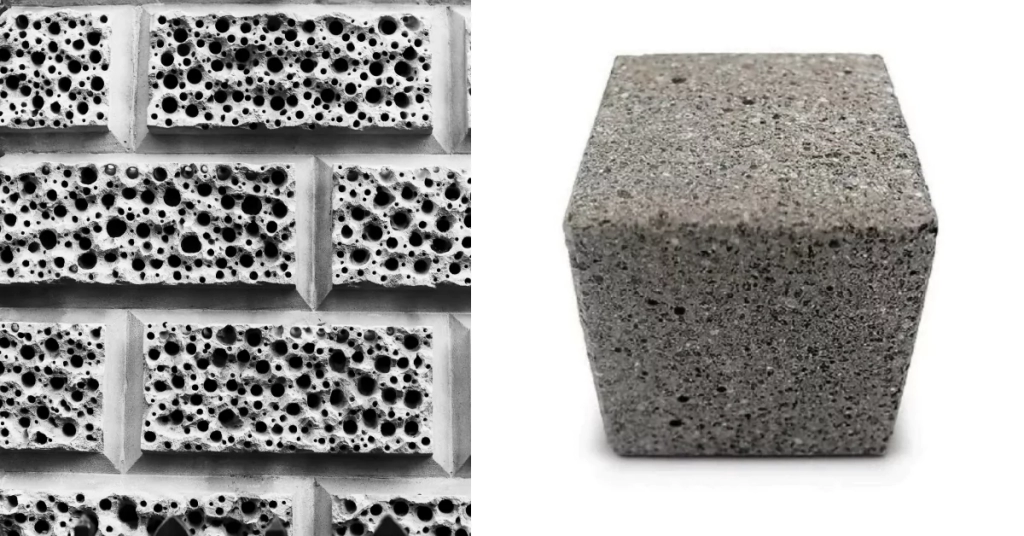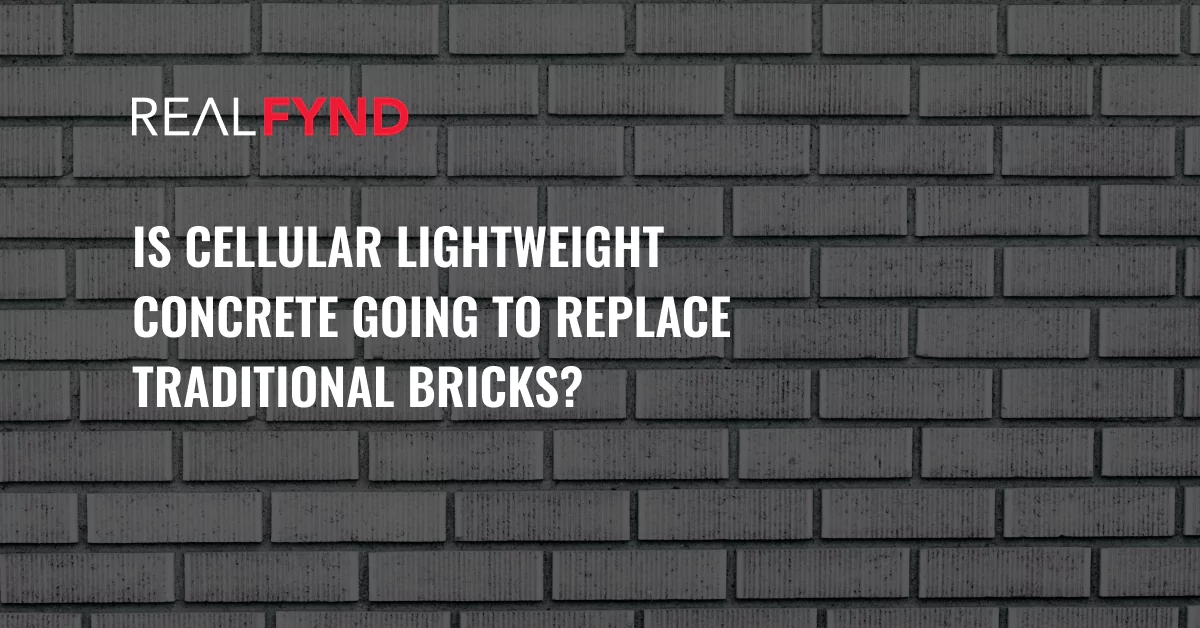When it comes to building a house or any other construction, the choice of materials is really important. There are a lot of options available today, but two of the most common are concrete blocks and red clay bricks. Both of these materials have unique qualities that affect how the building turns out. But now, with technology playing a bigger role in the world of real estate, a new kind of brick is becoming more popular. It’s called Cellular Lightweight Concrete (CLC) blocks also known as the Foam Brick or Foam Concrete. This article is going to explain what CLC blocks are and compare them to regular concrete blocks and red clay bricks.
What is Cellular Lightweight Concrete (CLC)
The breakthrough in CLC technology came with the introduction of foaming agents. These agents, when mixed with the concrete mixture, created a foam that, when incorporated, produced a cellular structure within the concrete. This cellular structure not only reduced the density of the concrete but also imparted excellent thermal insulation properties.

The density of CLC ranges between 400 kg/m3 to 1800 kg/m3, whereas the density of regular concrete is around 2400 kg/m3.
Simply put, cellular concrete is a type of concrete that contains tiny air bubbles. It is also known as foam cement, foamed concrete, or lightweight flowable fill. These bubbles are created by adding foam to the mixture, which helps make the material lighter and more flexible.
Advantages of Cellular Lightweight Concrete (CLC)
When it comes to construction, Lightweight Cellular Concrete is gaining popularity because of its many benefits. It’s called “lightweight” because it’s not as heavy as traditional concrete, as it has lots of tiny pockets of air in it. This makes it easier to work with and more efficient to transport. Builders are finding it to be a great choice for their projects because it’s versatile and durable. Here are some of the main advantages of using Lightweight Cellular Concrete:
Exceptional Lightweight Properties
As the name suggests, one of the primary advantages of cellular concrete is its remarkably low density. The incorporation of air bubbles during its production significantly reduces its weight. This lightweight feature makes it easier to handle, transport, and use in various construction applications.
Highly Workable and Versatile
Lightweight Cellular Concrete is highly workable, allowing for easy pouring, shaping, and molding. Its versatility lends itself to a wide array of applications, from structural elements to insulation and beyond. Contractors can adapt and utilize this material for diverse project requirements.
Enhanced Thermal Insulation
The air bubbles within cellular concrete act as insulators, providing excellent thermal insulation properties. This insulation helps in regulating indoor temperatures, reducing the need for extensive heating or cooling systems and ultimately cutting down on energy costs.
Improved Acoustic Insulation
The air pockets present in the cellular structure of this concrete not only assist in thermal insulation but also contribute to superior acoustic insulation. This makes it an ideal choice for projects where noise reduction and soundproofing are crucial, such as residential buildings or commercial spaces.
Reduced Structural Load
Due to its lightweight composition, cellular concrete helps reduce the overall structural load on a building or infrastructure. This characteristic is particularly advantageous in projects where structural load-bearing considerations are critical, allowing for more design flexibility.
Increased Fire Resistance
Cellular concrete possesses inherent fire-resistant properties, making it a safe choice for building construction. The material can withstand high temperatures for extended periods without significant structural damage, enhancing overall fire safety.
Cost-Effectiveness
The lightweight nature of cellular concrete translates into cost savings during transportation and handling. Additionally, its ease of placement and reduced labor requirements contribute to overall cost-efficiency in construction projects.
Sustainable and Eco-Friendly
Cellular concrete is considered an eco-friendly option due to its reduced use of raw materials and its potential to lower energy consumption. Its lightweight nature also contributes to reducing carbon emissions during transportation.
Enhanced Workability
This concrete variant offers excellent workability during the construction process. Its flowability ensures it can reach challenging or remote areas, facilitating efficient filling and placement.
Longevity and Durability
Despite its lightweight properties, cellular concrete retains durability and long-lasting qualities. Its ability to resist settling and maintain structural integrity over time ensures a prolonged lifespan for constructed elements.
A Quick Comparison of CLC Blocks, Regular Concrete Blocks, and Red Clay Bricks
| Parameters | CLC Blocks | Regular Concrete Blocks | Red Clay Bricks |
|---|---|---|---|
| Raw Materials | Cement, lime, specially grinded sand, foam | Locally available clay | Cement, fly ash, water and Air entraining agents |
| Strength | High | Very High | Very High |
| Insulation | Excellent thermal insulation due to air bubbles | Good | Good to Excellent |
| Weight | Lightweight, easy to handle and transport | Heavy | Moderate |
| Durability | Durable | Very durable | Durable |
| Availability | Availability can vary based on location and supplier | Widely available | Widely available |
| Aesthetic Appeal | Simple, modern appearance | Basic and industrial | Traditional, rustic |
| Environmental Impact | Lower energy consumption in production | Higher energy consumption in production | Moderate |
| Ease of Installation | Easy to cut and shape, reducing construction time | Requires specialized skills and equipment for cutting and shaping | Requires skilled labor for precise installation |
In summary, Lightweight Cellular Concrete stands as a modern construction material with multiple advantages, from its lightweight and versatile nature to its energy efficiency and sustainability, making it an attractive choice for a wide range of applications in the construction industry.



